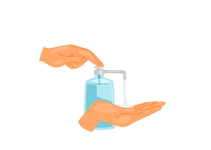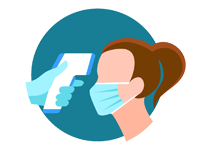Tetracaine
Introduction
Tetracaine is a local anesthetic medication primarily used to numb specific areas of the body before medical procedures. It is commonly applied topically or used in eye drops, injections, and spinal anesthesia. Tetracaine belongs to the ester-type group of local anesthetics and provides fast and effective relief by temporarily blocking nerve signals in the area of application. It is widely used in hospitals, clinics, and diagnostic labs for short-term pain relief during minor procedures or examinations.
Medicine Not Available for Tetracaine
Uses of Tetracaine
- Used for local anesthesia during minor surgical procedures
- Applied before diagnostic eye examinations like tonometry
- Used to numb the skin or mucous membranes before insertion of instruments
- Helps relieve pain and discomfort caused by skin irritations or insect bites
- Used in spinal anesthesia for surgeries involving the lower body
How Tetracaine works
Tetracaine works by blocking sodium channels in nerve cells, preventing the initiation and conduction of nerve impulses. This leads to temporary loss of sensation in the area where it is applied, providing effective local anesthesia. Its fast onset and moderate duration make it suitable for a wide range of medical uses.
Benefits of Tetracaine
- Rapid onset of action provides quick pain relief
- Effective numbing for minor surgical and diagnostic procedures
- Can be used topically, in eye drops, or as an injection
- Minimizes discomfort during medical or dental work
How to take Tetracaine
Tetracaine should only be used under medical supervision. It is usually applied to the skin or mucous membranes, instilled into the eyes, or injected by a healthcare provider. Follow your doctor's instructions carefully and never exceed the recommended dose. Do not use it on broken or irritated skin unless advised by your doctor.
Type of Dosage Available
- Topical cream or gel
- Ophthalmic solution (eye drops)
- Injectable solution
- Spinal anesthesia solution
Side effects of Tetracaine
- Burning or stinging at the application site
- Redness or swelling
- Allergic reactions like rash, itching, or difficulty breathing
- Dizziness or blurred vision
- Severe reactions such as seizures (in rare cases)
Safety Advice
- Use only as prescribed by a healthcare professional
- Avoid using on open wounds or broken skin without medical advice
- Not recommended for use during pregnancy or breastfeeding unless necessary
- Keep away from eyes unless it's the prescribed eye formulation
- Inform your doctor about any allergies or existing medical conditions
Frequently Asked Questions (FAQs)
Q: What is Tetracaine used for?
A: Tetracaine is used to numb specific areas of the body before medical or dental procedures, and to relieve localized pain or irritation.
Q: Is Tetracaine safe for children?
A: Tetracaine should only be used in children if prescribed and administered by a qualified healthcare provider.
Q: Can I use Tetracaine on broken skin?
A: No, unless directed by a doctor, you should not apply Tetracaine to open wounds or irritated skin.
Q: How long does Tetracaine take to work?
A: Tetracaine typically begins to work within a few minutes and its effects can last for 15–30 minutes depending on the form used.
Q: Is a prescription required for Tetracaine?
A: Yes, Tetracaine is generally a prescription medication and should be used under medical supervision.
Download India's most affordable pharmacy app
- Compare with medicine prices
- Save upto 90% on your medicine bills

Temperature Controlled storage and delivery

Regular Sanitization

Disinfected Packaging









 Added!
Added!